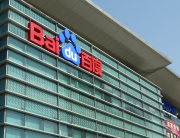The internet is awash with blogs and articles about Google’s latest algorithm update; Panda 4.0. This update has marketers, webmasters and SEOs the world over scrambling to understand how it’s affecting their SEO efforts on their websites. Akin to many of Google’s previous updates, this latest emphasises high-quality websites and content.
But what does this explicitly mean? How can small and local businesses make sure that their sites and content falls under the category of ‘high-quality’? How can they remain visible on Google and compete with the big guys? We can speculate all we want about the Panda 4.0 update, but here are two key things that the update most definitely focuses on, and how you can take advantage for your business.
Fresh, Quality Content
The original Panda algorithm patch was aimed towards websites with consistent, high-quality content that users clearly appreciated and getting these types of websites rising above those with scraped or duplicated content on Google’s search engine results pages.
You know the type. Those websites that are horrible to navigate and has content which is either irrelevant or useless. Websites that are devoid of all aesthetic qualities are pretty much binned immediately. If you have a bounce rate of over, say, 70%, Google knows all two well that you are not a very good website, and those coming to your site aren’t finding what they’re looking for.
Panda 4.0 continues to make good content a priority. This update further emphasises the need for frequent, high-quality content content on your website. This can be a lot of things; blogs, articles, infographics, site content, pictures, videos etc. This goes beyond just updating your product pages.
Create a plan for publishing fresh content. Make sure it’s, unique, relevant and has it’s keywords implemented so that it stands out to search engines and consumers. What’s the need for this you might ask? If you’re copying content from other places around the internet, posting low-quality, unengaging irrelevant content or disregarding content entirely, you need to rethink your SEO strategy.
Content is food for Google, and it has to taste good. Feed the beast.
Google wants your site to be modern. Visibly outdated ones will get binned.
The content you produce for your website is a huge contributor towards the quality of it, but there are of course other factors which need to be considered. When we discuss quality in regards to SEO, what we’re really talking about is the user experience. Having an intuitive website structure, a mobile-optimised site and user-friendly content can all have an effect on your site getting indexed by search engines and found by your target audience.
If your site’s navigation structure or appearance is outdated – which a lot of site around the web are – then this is the time for a new website design. Check your metadata too (the content that’s picked up by search engines, you know, the titles, descriptions etc.), along with your on=site content. Make sure ituses natural language and the keyword implementation is well disguised.
At the end of the day, Google simply wants the people coming to your site to have a good time, find what they were looking for and for you to be able to retain this traffic. Google’s become so smart, because of its algorithm, that it knows whether your site is ticking these boxes or not.
What It All Means to Your Business
Local and/or small businesses shouldn’t be discouraged. Google is on their side even when it doesn’t seem be that way. Google 4.0 may work in favor of these businesses due to the update rewarding those that are truly providing themselves to be a quality, useful resource to consumers.
Ask yourself, is your website and its content helping or hurting your SEO? If there ever was a time to provide regular, quality content that essentially makes your business an asset to the consumers, it’s now.
Make Panda 4.0 work for you, not against you.









